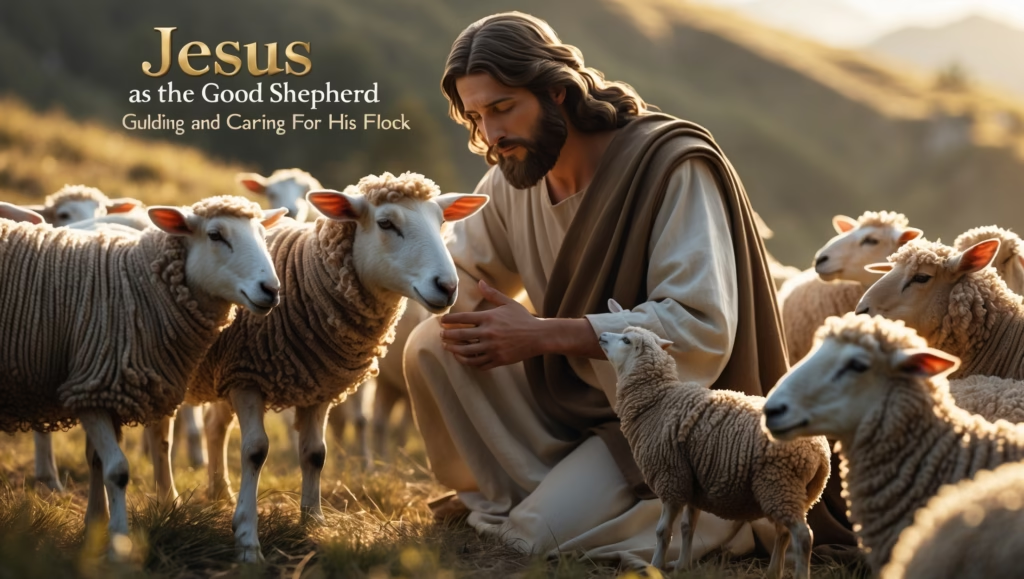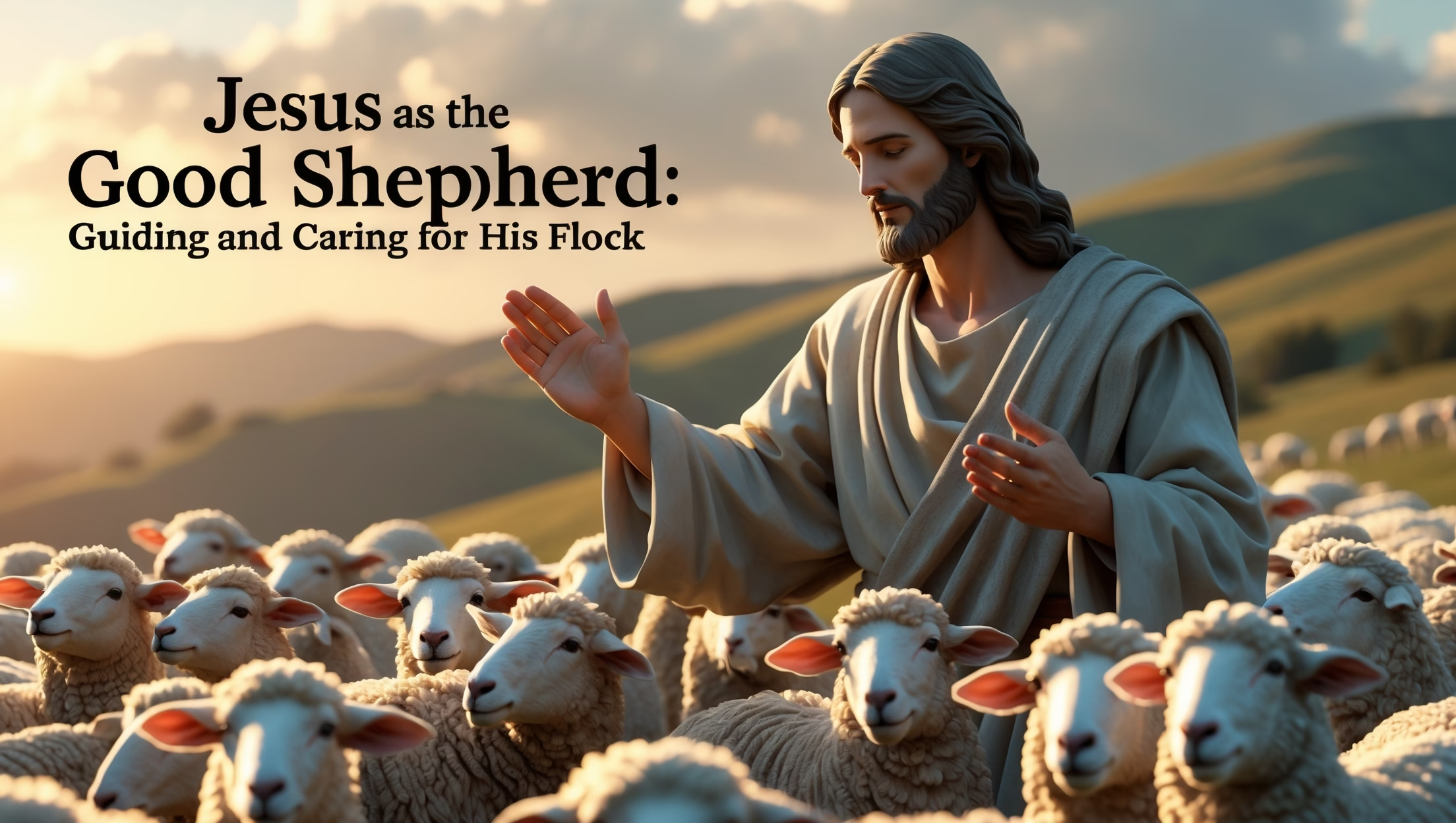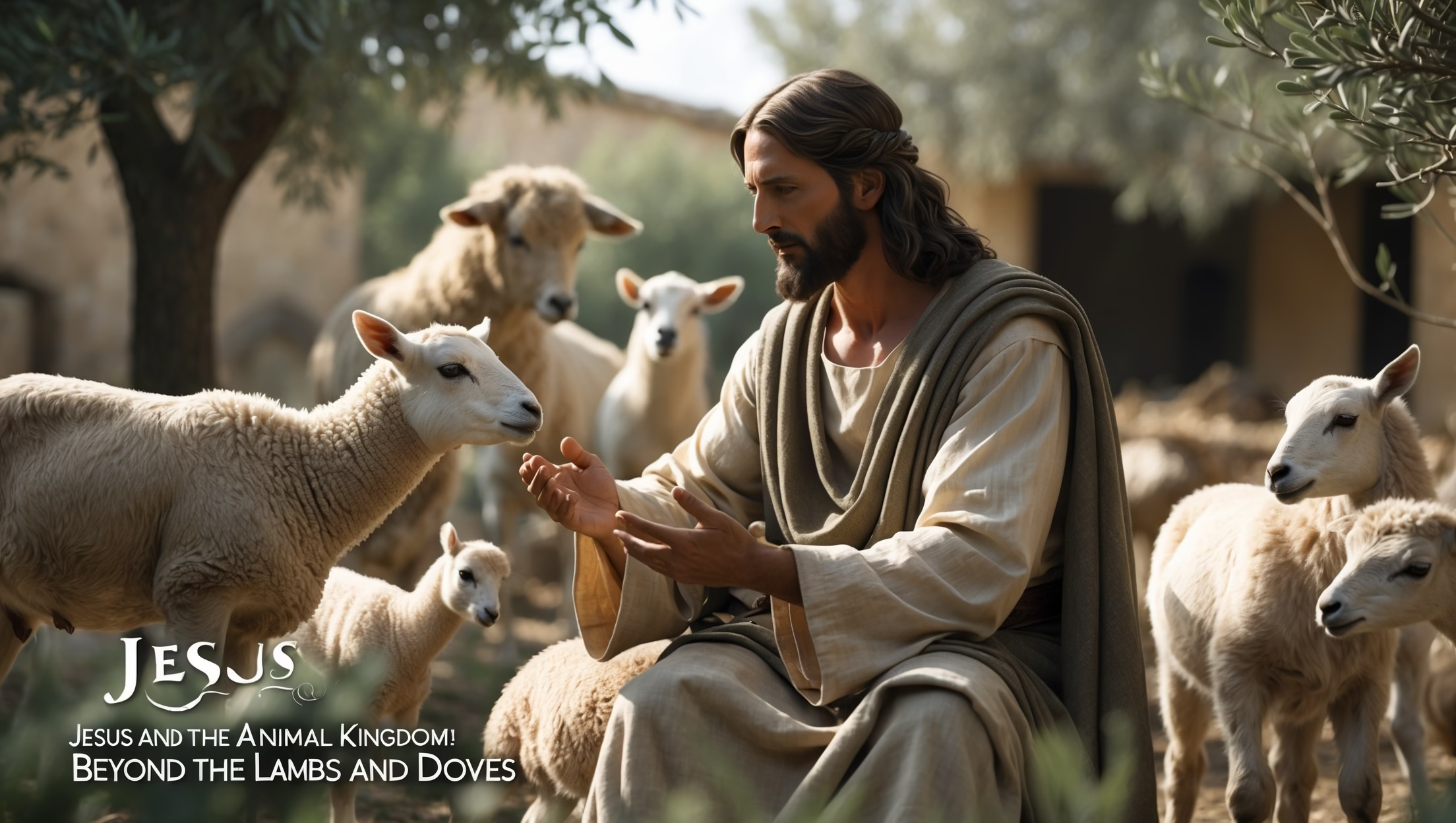Introduction
One of the most tender and enduring images Jesus used to describe Himself is that of the Good Shepherd. This metaphor communicates not only His care and guidance but also His sacrificial love for His people. Throughout Scripture, the image of the shepherd portrays God’s intimate knowledge of, and commitment to, His flock. For believers, understanding Jesus as the Good Shepherd provides profound insight into His character and His approach to leadership, protection, and provision. This image also invites followers into a personal, trusting relationship, highlighting both His authority and His love.
The depiction of Jesus as the Good Shepherd is rich with meaning. It emphasizes that God’s care is personal, relational, and protective. Unlike a hired hand who might flee in danger, the Good Shepherd remains devoted, sacrificial, and ever-present. This imagery is deeply comforting, especially in a world filled with uncertainty, trials, and spiritual threats.

The Shepherd Knows His Sheep
Jesus said, “I am the Good Shepherd. I know My sheep, and My sheep know Me” (John 10:14). This statement reflects the intimate relationship He desires with His followers. Unlike a distant ruler, the shepherd knows each individual personally, recognizing their needs, tendencies, and fears.
The knowledge the shepherd possesses is not superficial. Jesus recognizes the unique calling, struggles, and potential of every believer. His knowledge fosters trust, as the sheep can identify His voice amid the distractions and dangers of life. This personal relationship underlines the idea that following Jesus is not merely about obedience but about communion, trust, and mutual recognition.
The Shepherd Provides and Protects
A key responsibility of a shepherd is to ensure the well-being of the flock. Jesus, as the Good Shepherd, provides both spiritual and physical sustenance. He guides believers to nourishment, whether through Scripture, prayer, fellowship, or the teaching of His Word.
Protection is another essential aspect. Just as a shepherd defends sheep from predators, Jesus shields His followers from spiritual harm. This protection does not eliminate challenges or trials but provides strength, discernment, and deliverance from ultimate danger. Miracles, guidance, and divine wisdom are ways through which He manifests this protection. Believers can rest in the assurance that His care is constant and comprehensive.
The Shepherd Lays Down His Life
One of the most profound aspects of the Good Shepherd is His willingness to lay down His life for the sheep (John 10:11). Jesus’ sacrificial death on the cross embodies this promise. Unlike a hired hand who abandons the flock in danger, Jesus willingly faced death to secure salvation and eternal life for His followers.
This sacrificial love defines the heart of God’s mission in the world. It emphasizes that true leadership and care are not about convenience or self-interest but about service and sacrifice. The cross stands as the ultimate testimony of the Shepherd’s commitment, demonstrating that no cost is too great for the safety and redemption of His flock.
The Shepherd Gathers All Nations
Jesus’ mission extends beyond the Jewish people to include all nations. He spoke of bringing other sheep into the fold, symbolizing the inclusiveness of God’s kingdom (John 10:16). This universal vision demonstrates that His guidance, care, and sacrificial love are not limited by culture, ethnicity, or social standing.
The gathering of all nations highlights God’s desire for reconciliation and unity. It encourages believers to participate in His mission by extending love, care, and the message of salvation to others. The shepherd’s work, therefore, encompasses both individual care and collective inclusion, showing that the Kingdom of God is for everyone willing to hear and follow His voice.
Following the Shepherd Today
Following the Good Shepherd involves discernment, trust, and obedience. Believers are called to listen to His voice through prayer, Scripture, and the counsel of the Holy Spirit. This relationship requires attentiveness, as the sheep must distinguish the true Shepherd from false guides or distractions.
Faithful following also means trusting His guidance in times of uncertainty, hardship, and spiritual attack. The Shepherd provides direction, assurance, and sustenance even when the path seems unclear. By cultivating intimacy with Jesus, believers experience security, peace, and the confidence that comes from being under His protective care.
Conclusion
The image of Jesus as the Good Shepherd offers a comprehensive vision of His love, sacrifice, and care for His followers. He knows each believer personally, provides for their needs, protects them from danger, and laid down His life for their salvation. His mission extends to all nations, calling everyone into a trusting, obedient relationship. For contemporary believers, this metaphor invites reflection, reassurance, and faithful response. Following the Good Shepherd is both a privilege and a calling—an invitation to live in intimacy, guidance, and security under the care of the One who laid down His life for His sheep.









